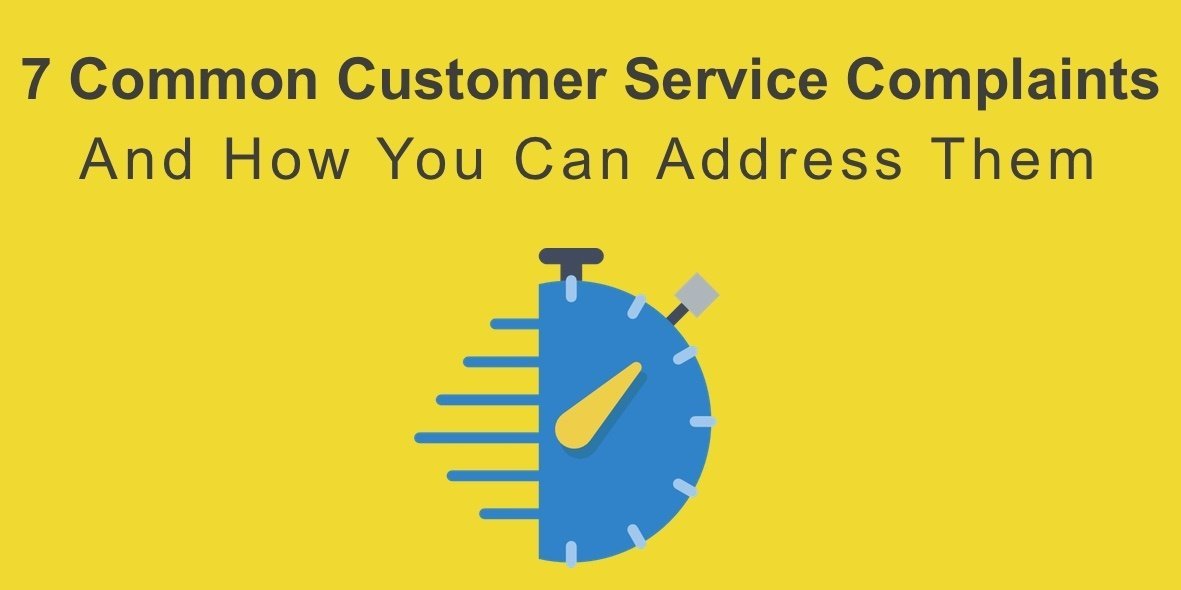7 Common Customer Service Complaints And How You Can Address Them
The old adage “The Customer is King” is even more true today than it has been in the past. The stakes are higher than ever for call centers to consistently provide top-notch service to customers.
According to a survey conducted by Dimensional Research, 95% of customers report they tell others when they have a bad customer service experience, and customers are 50% more likely to share a negative customer service experience on social media than a positive one. Thus, as important as it is to make the customer happy, it is perhaps even more important to avoid making the customer unhappy.
Here are the 7 most common customer service complaints and how you can address them.

Customers hate…
1. Being Transferred Over and Over
Trying to reach a solution to a complex problem shouldn’t make the customer feel like a reluctant dancing partner. A customer would much prefer to work with one knowledgeable, dependable agent rather than being transferred repeatedly from agent to agent.
**Call center horror stories told by customers**
Solution
One way to resolve this issue is to make sure agents are trained across all areas of sales and service.
Another solution is to make sure the customer connects with the best agent for their concern the first time. This can be accomplished through use of an automated menu at the beginning of the call (see #2) or by having different phone numbers for different areas of service. Dedicated service from one person from start to finish means a solution or sale, and a satisfied customer.
**Is your interactive voice response doing more harm than good?**

2. Having to Re-Explain Their Issue Repeatedly
This one goes hand-in-hand with being transferred from agent to agent. To be sure, a customer who is already frustrated with a product issue is likely to become more frustrated every time they have to relive the experience by explaining it to yet another agent.
According to a study by Harvard Business Review, 59% of customers reportedly expend moderate to high effort in order to get their issue resolved. Surely we can do better than that.
Solution
Fortunately, this problem is not complicated to solve. Agents need to keep a detailed record of the interaction as it unfolds in real time. This way, if the customer has to be transferred to another agent who can better assist them, the information they’ve already shared can be passed along, too.
3. Dealing with an Automated System
Does this sound familiar? Please enter your 9-digit reference number, followed by the pound sign. [beep boop beep] I’m sorry, that is not a valid entry, please enter your 9-digit… [click].
According to research conducted by American Express, 67% of customers admit they’ve hung up the phone out of frustration because of not being able to speak to a live person. Chances are, these customers take their business elsewhere (about 59% probably would).
Solution
Rather than anger their customers right at the opening phase with an automated system, call centers should consider making direct human contact a high priority in their customer service plan. Creating custom numbers or extensions according to service categories can help to divide and assign calls without the customer ever having to encounter a creepy robot voice.

4. Waiting Too Long
This is one of the most common customer service complaints. Ever wonder where they come up with the music people have to listen to while they’re on hold? Of course, you have. Everyone has. Because everyone has been stuck on hold long enough to start wondering. In his movie The Cable Guy, Jim Carrey impersonated it perfectly for its odd sultriness and utter predictability.
Solution
Call centers need to keep a close eye on their queues, their peak volume times, and their average wait times to make sure customers are getting an efficient service experience.
5. Feeling Like They’re Not Being Heard
Being heard is akin to feeling valued. There is a reason that companies use customer service agents instead of merely relegating customers’ needs to a fully computerized system. By definition, an “agent” is one who acts on behalf of another to exact a change or effect. But before an agent can respond, he or she must first aim to understand a customer’s needs accurately and completely.
Solution
Agents should be trained in the area of active listening. Rather than simply gathering information from a customer and generating a corresponding solution, agents should ask questions and rephrase customers’ problems back to them to ensure complete understanding before arriving at a one-size-fits-all solution.
**How to train agents to personalize the customer service**
6. When Inexperienced Agents Give Programmed Responses
Maybe this is a no-brainer, but in order for customer service representatives to help others with a product, they need to fully understand the product for themselves.
Solution
Whether it’s a game console, a coffeemaker, or a software package, agents should be as intimately familiar with the ins and outs of the product as an everyday user would be.
7. Late Response Time to Electronic Messages
Customers in the digital age expect answers and solutions faster than ever before. Thus, late electronic response time is quickly becoming one of the most common customer service complaints.
On social media channels, a majority of customers expect an answer within an hour. For emails, customers wait for a response to come within 6-24 hours.
Solution
A customer service center must monitor their wait time, and ensure that they are prepared to staff and train agents in order to meet such expectations.
It’s practically impossible to keep all customers satisfied. Nonetheless, it’s important you listen to your clients and keep a keep eye on common customer complaints in order to improve your service to maintain and grow your relationships.






